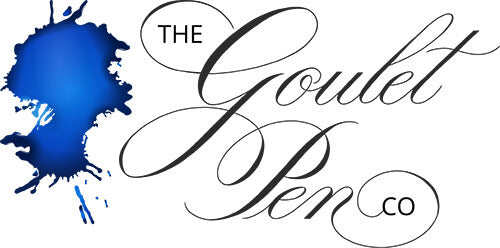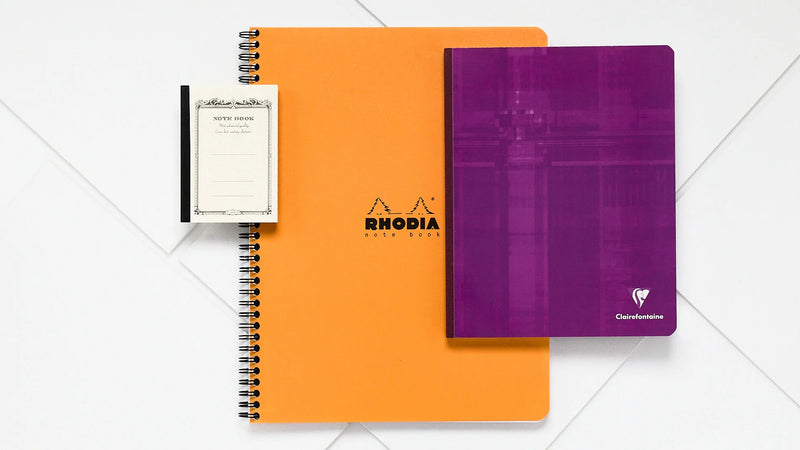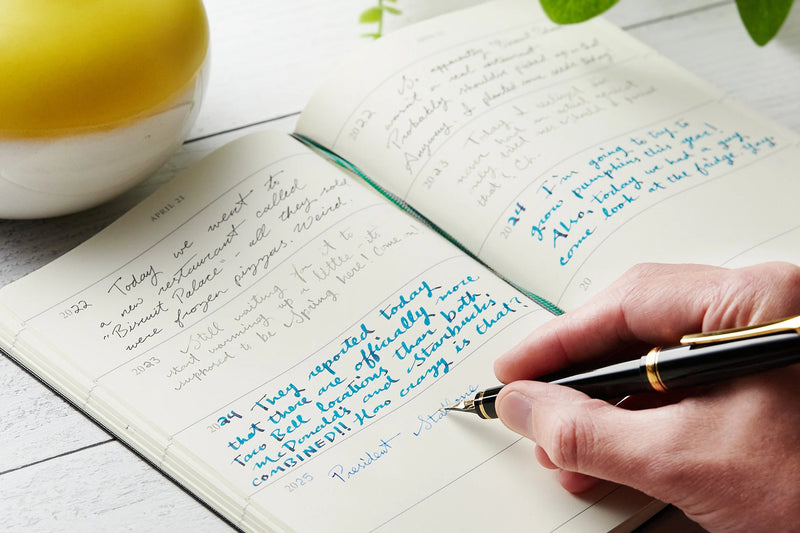Why Paper Matters
Yes, Paper Matters
You may be surprised to learn that the paper you choose can make a huge difference when it comes to how your fountain pen writing appears. You can have a wonderful experience and then switch papers, and it's totally different. You'll often hear fountain pen people talk about the Trifecta- the pen, ink and paper you choose makes a difference. Sometimes, the paper you're using is as important as your nib size, or ink choice.
Watch the video above, and continue reading to get the details about what your choice of paper can affect.
Absorbency
Let's be honest, your paper may suck if you're not getting the results you want. If it's super absorbent, the fibers of the paper will draw in your ink creating a significant amount of spread, feathering, and bleed through into the backside of the page. No one wants this.
Take a look at the next two images; you can see the difference between the basic notebook paper and the Clairefontaine Triomphe in the density of the line, presence of shading, and the overall clarity of line of ink. If you look to the edges you'll see the distinct presence and absence of feathering; which is the "fuzzy" look you get when the ink absorbs too far into the paper.
Mead notebook paper
Note the excess feathering and larger line - the paper below is quite absorbent.

Clairefontaine 90g Paper
The Clairefontaine paper below shows less feathering and the line is noticeably smaller with the same pen and ink.
Thickness
Paper comes in varying degrees of thickness and it's usually measured in gsm or grams per square meter. In the US, we usually have paper sold by the pound weight (eg: 30lb copy paper) and the two styles of measurement aren't easily converted. The thickness will play a role in some papers but there are some papers like Tomoe River that is both very thin and very ink resistant. Thickness plays a larger role in "ghosting" (being able to see your writing from the backside of the page). It's not full on bleed through, just the thinness of the paper allowing you to see the other side.
Coating
Some paper has a coating, a final finish, or a composition that allows it to resist the ink and have very slow absorption. Tomoe River paper, mentioned earlier, is one such paper and its ink resistance is why it can show the attributes of inks like sheening and shading so well. Below are some examples of how different an ink can look from one paper to another.
Leuchtturm1917
Note the dark green tone of the ink with almost no sheen or other color visible on this Leuchtturm1917 paper, which is quite absorbent. The line width appears wider.

Tomoe River
Note the deep red sheen along with the dark green tone and the slightly thinner appearing line width from the same pen. Tomoe River paper resists the ink and that's what gives such a different appearance.
Bottom Line: Experiment!
The best paper for you is the one you like best. While we can make recommendations all day long, the best way to pick a paper you like is to try them. We have a Notebook Sampler Package Set that will allow you to do just that. It offers a pocket-sized notebook from Apica CD-5 (lined), Clairefontaine Staplebound (lined), Goulet Notebook with 68gsm Tomoe River paper (dot grid), Maruman Mnemosyne B7 Notepad (lined), Traveler's Notebook Refill 001 Passport size (lined), and Rhodia No. 12 (dot grid). This is the best way to find what you like, although you might find more than one brand you decide works for you.
Final Thoughts
Your ink, paper, and pen make the trifecta of your writing experience so if you ever feel like something about the fountain pen experience could be enhanced, don't overlook the profound effect that paper can have on your results.















